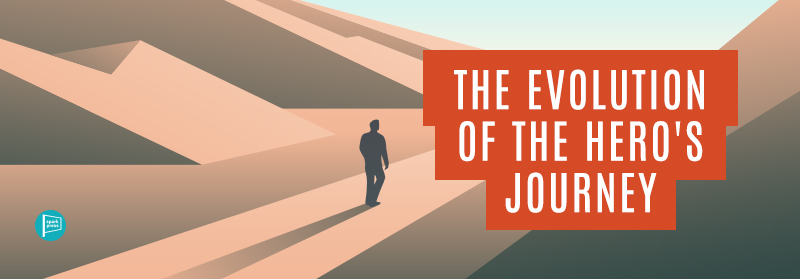
What is the Hero’s Journey?
The Hero’s Journey is a skeletal framework that describes how a character moves throughout their journey within a plot. While every story does not contain the Hero’s Journey, many stories are outlined by it. In 1949, Joseph Campbell wrote The Hero with a Thousand Faces, which analyzed the hero’s journey in a step-by-step guide. In 1992, Christopher Vogler wrote The Writer’s Journey: Mythic Structure for Writers which condensed and modernized Campbell’s theory on the Hero’s Journey, and Vogler was one of the firsts to depict it as a guide. The evolution of the Hero’s Journey, like all aspects of literature, has happened over time.
The Hero’s Journey can be seen as far back as Greek and Roman mythology, telling stories of great heroes like Hercules, Perseus, Achilles, and Jason. These stories depict heroes fighting on behalf of the gods and strengthened polytheistic belief systems. These legends intertwined with religion and myths, to display great and impossible journeys.
Christopher Vogler’s Framework of the Hero’s Journey:
ACT ONE:
Ordinary World
Call to Adventure
Refusal to the Call
Meeting with the Mentor
Crossing the First Threshold
ACT TWO:
Tests, Allies, Enemies
Approach to the Inmost Cave
Ordeal
Reward
ACT THREE:
The Road Block
Resurrection
Return with the Elixir
How has the Hero’s Journey changed?
The Hero’s Journey no longer solely reflects epic quests. It has begun to also represent psychological journeys. It can be seen in real world situations, so much so it has begun to transcend genre, and can now be seen in memoirs and biographies. This has helped the Hero’s Journey become a beacon of inspiration and hope.
The framework of the Hero’s Journey has helped to create a guide for writers about how and when to evoke specific emotions. At its core, it is rooted in psychology. The archetypes in the Hero’s Journey are based on Carl Jung’s psychological archetypes. These archetypes represent parts of the personality; for example, the hero represents the ego. Over time this has helped to create a pathway for the Hero’s Journey to exist in both fiction and non-fiction. Being more realistic and relatable broadens the readership and influence. Click here for more about archetypes, using The Lion, The Witch, and The Wardrobe as an example.
As the Hero’s Journey has become more relatable, it has inspired people to be better versions of themselves. This journey is no longer an unattainable quest, it can be used to showcase real life battles. In Patricia Polacco’s Thank you, Mr. Falker, she uses the Hero’s Journey to depict her journey towards literacy.
Thank you Mr. Falker is a perfect example of how the Hero’s Journey has evolved. It depicts the story of a young girl who can’t read, when all she wants in the world is to enter the world of literacy. The audience sees the Ordinary World as the world before she enters school, and the Special World as the world when she is in school. This showcases the changes in the Hero’s Journey because in the past, entering the Special World meant entering dramatic and often fantastical quests.
The Hero’s Journey has always meant to inspire. Throughout the ancient stories, heroes were often vengeful, arrogant, and had too much hubris. Now, the heroes we see are more relatable. We want them to succeed because they give us hope. We are rooting for them because we want to be like them. The Hero’s Journey is not just about inspiration any longer, it is also pushing people to be better versions of themselves.

Leave A Comment